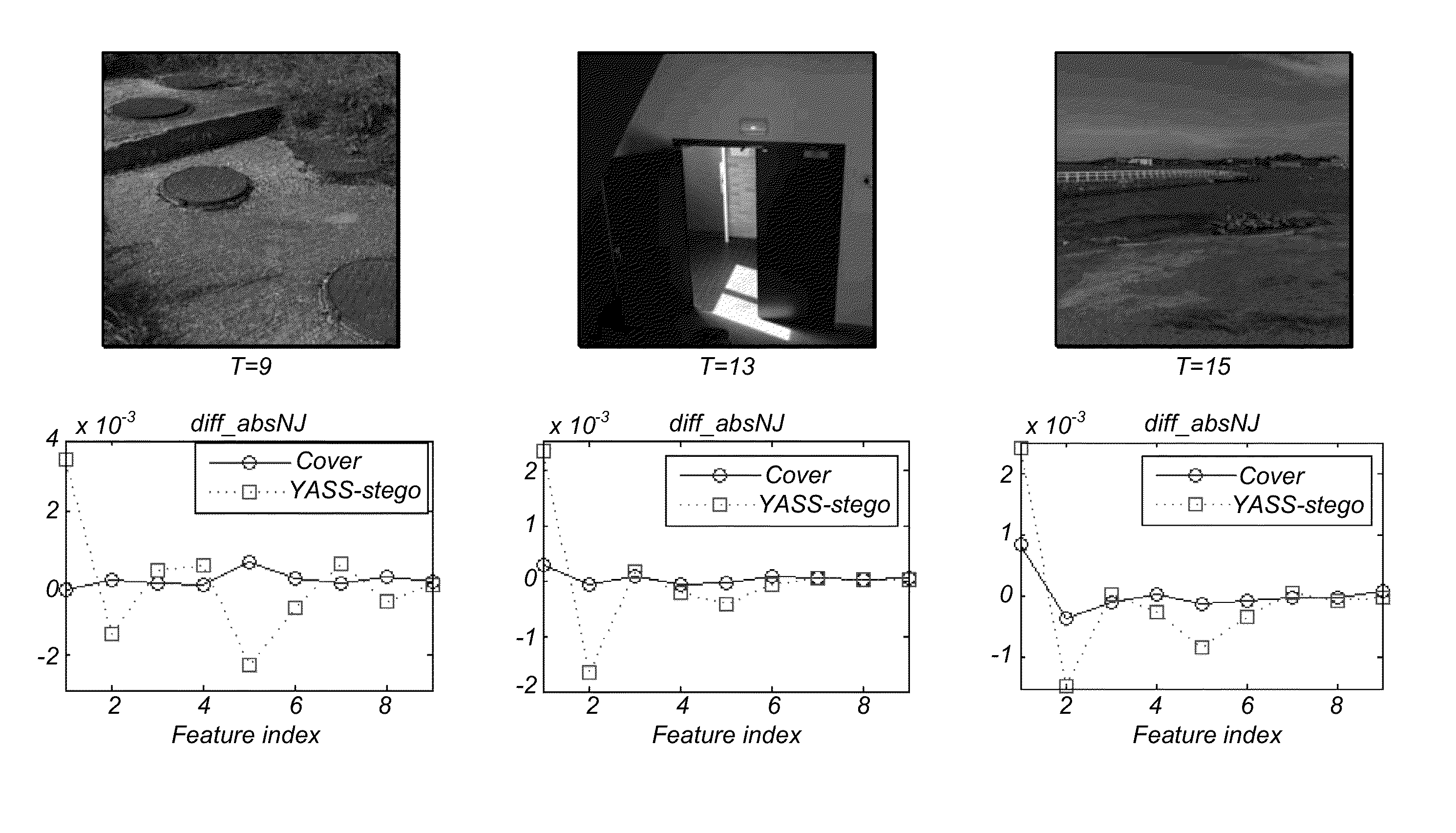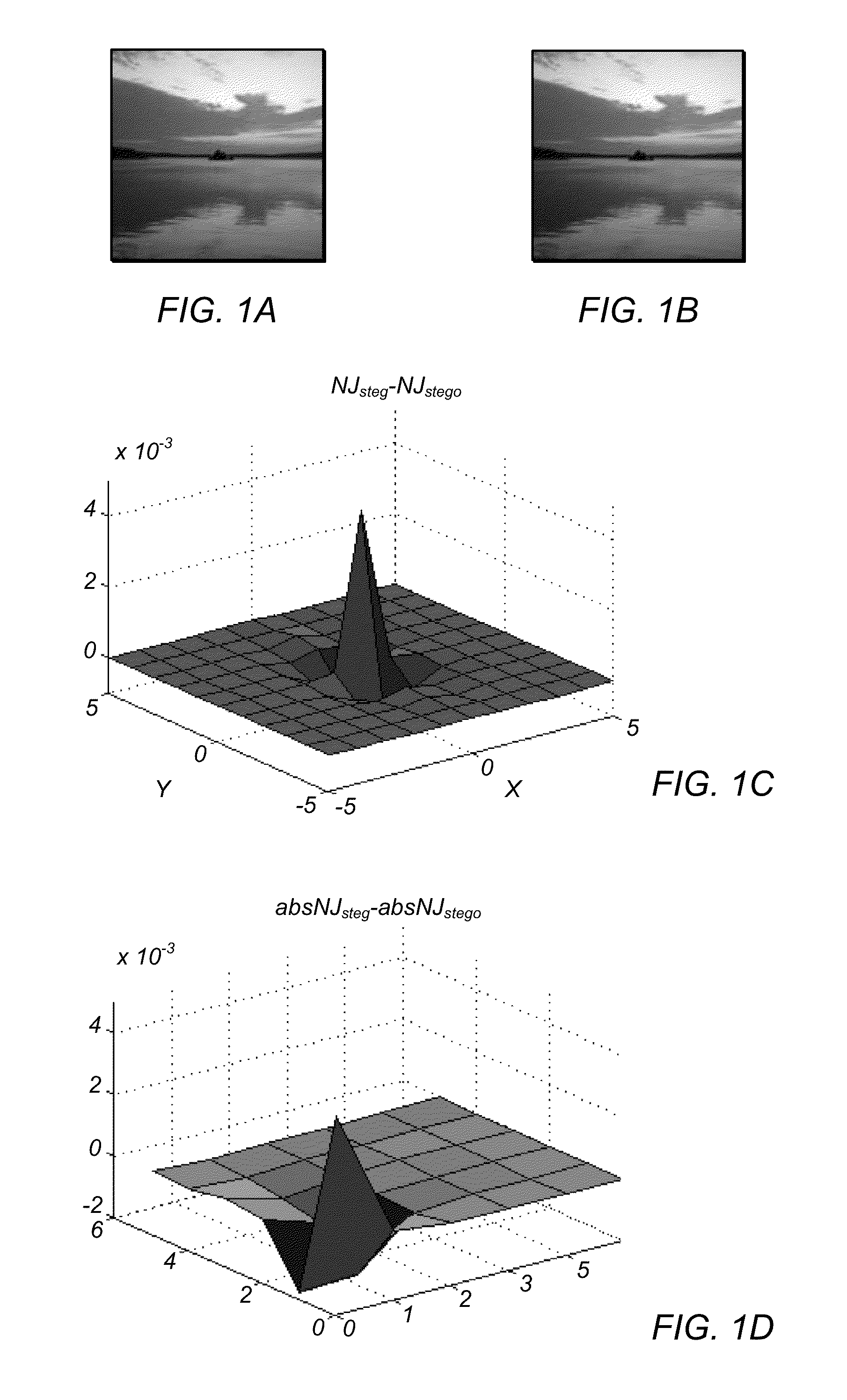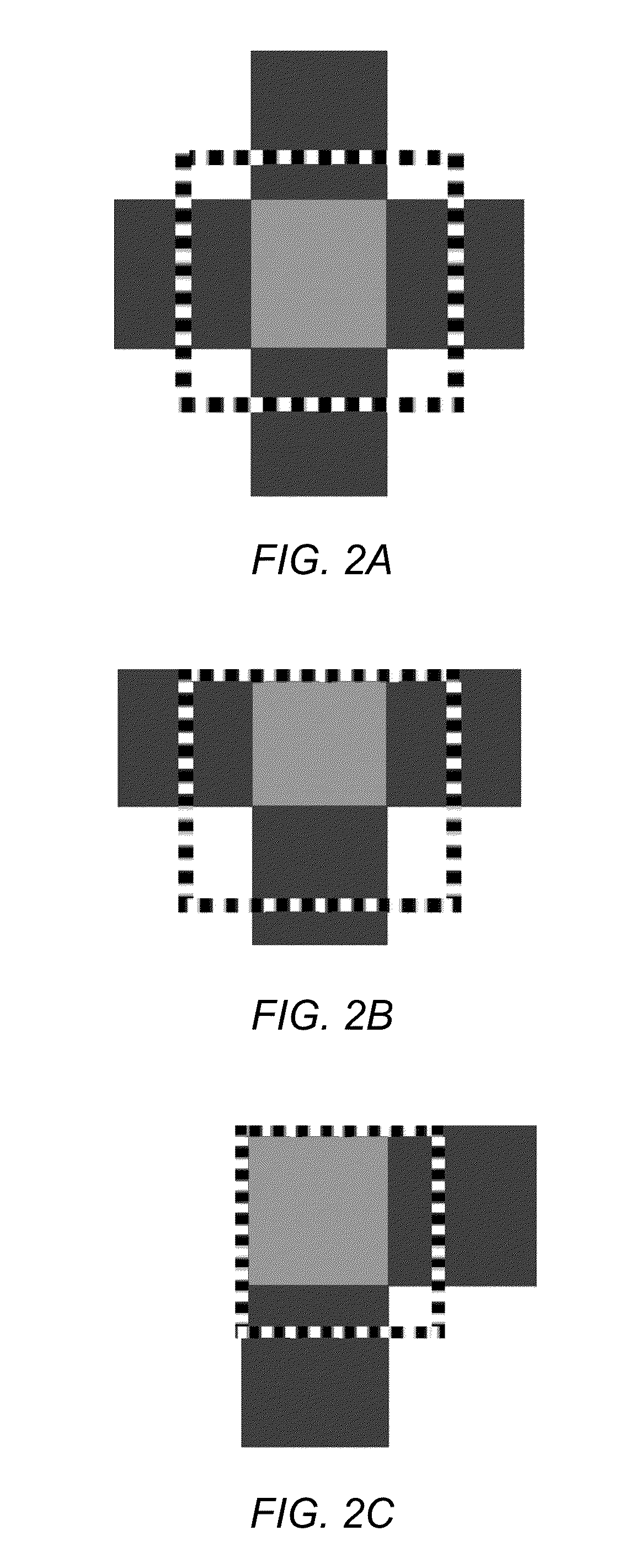Steganalysis with neighboring joint density
a neighboring joint density and steganalyzer technology, applied in the field of methods for detecting hidden messages, can solve the problems of posing serious challenges to steganalyzers, additional challenges, and the detection of the yass steganogram produced by a large b-block parameter, but not well explored
- Summary
- Abstract
- Description
- Claims
- Application Information
AI Technical Summary
Problems solved by technology
Method used
Image
Examples
example 1
Steganalysis of DCT-Embedding-Based Non-Adaptive and Adaptive Steganography
1) Setup
[0087]5000 original color TIFF raw format digital images used in the experiments are 24-bit, 640×480 pixels, lossless true color and never compressed. The original images are cropped into 256×256 pixels in order to eliminate the low complexity parts and converted the cropped images into JPEG format with the default quality. The following DCT-embedding-based non-adaptive steganograms may be generated with different hiding ratios. In this example, the information-hiding ratio is measured by using the relative payload, calculated by the ratio of the number of the DCT-coefficients modified to the total number of non-zero valued AC DCT-coefficients.
[0088]1. JPHS (JPHIDE and JPSEEK).
[0089]2. Steghide. Hetzl and Mutzel designed a graph-theoretic approach for information-hiding based on the idea of exchanging rather than overwriting pixels. This approach preserves first-order statistics.
[0090]3. F5. The algor...
example 2
Steganalysis of DCT-Embedding-Based Adaptive Steganography
[0106]1000 BOSSRank cover images are converted into JPEG images with the quality factor “75”. The JPEG-based adaptive steganograms are produced by using the DCT-embedding based hiding tool, and the parameter of hiding bits per non-zero-AC (bpac) is set from 0.1 to 0.4 with the step of 0.05 bpac. 72-dimensional ratio features are extracted, defined by (13) and (14), or diff-absNJ-ratio, and 144-dimensional features, or ref-diff-absNJ, from the JPEG covers and the adaptive steganograms. To compare our feature sets and a recently well-designed feature set, CC-PEV, 548-dimensional CC-PEV features are extracted from the covers and steganograms. A logistic regression classifier and Support Vector Machines (SVM), are used for the detection. In each experiment, 50% samples are randomly selected for training, and the other 50% samples are used for testing. In each experiment, the testing results can be divided into True Negative (TN),...
example 3
Steganalysis of YASS
1) Setup
[0110]1000 BOSSRank cover images are used for YASS embedding. QFh=QFa=was set at 75 and QFh=QFa=are set at 5. Accordingly, 1000 BOSSRank cover images in JPEG format at the quality factor of 75 and 50 respectively, which are used as JPEG covers. In creation of YASS steganograms, QFh and QFa may be set to the same quantization factor in order to avoid double JPEG compression, because the YASS steganograms might be detected by using the detection method to expose double JPEG compression. In this experiment, the embedding parameter T of B-block size is set from 9 to 15. To conduct a comparative study, diff_absNJ features defined in (14) may be extracted, and the zerovalued probability features presented. SVM, FLD and logistic regression classifier are used for classification. In each experiment, 50% samples are randomly selected for training, and the other 50% samples are used for testing; 200 experiments are operated for each feature set at each B-block size...
PUM
 Login to View More
Login to View More Abstract
Description
Claims
Application Information
 Login to View More
Login to View More - R&D
- Intellectual Property
- Life Sciences
- Materials
- Tech Scout
- Unparalleled Data Quality
- Higher Quality Content
- 60% Fewer Hallucinations
Browse by: Latest US Patents, China's latest patents, Technical Efficacy Thesaurus, Application Domain, Technology Topic, Popular Technical Reports.
© 2025 PatSnap. All rights reserved.Legal|Privacy policy|Modern Slavery Act Transparency Statement|Sitemap|About US| Contact US: help@patsnap.com



